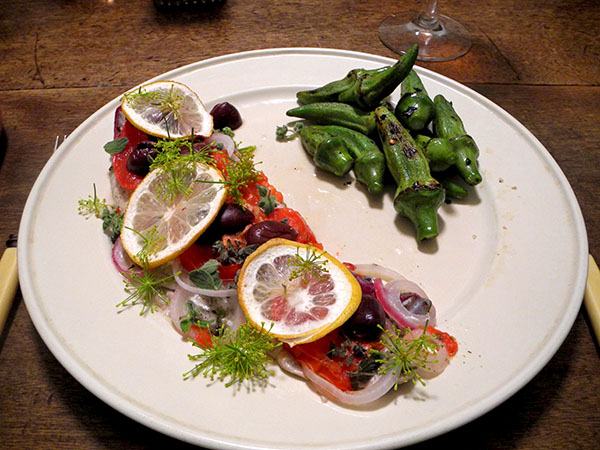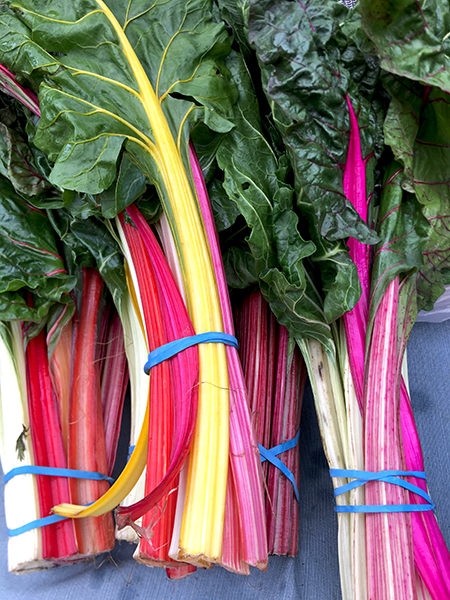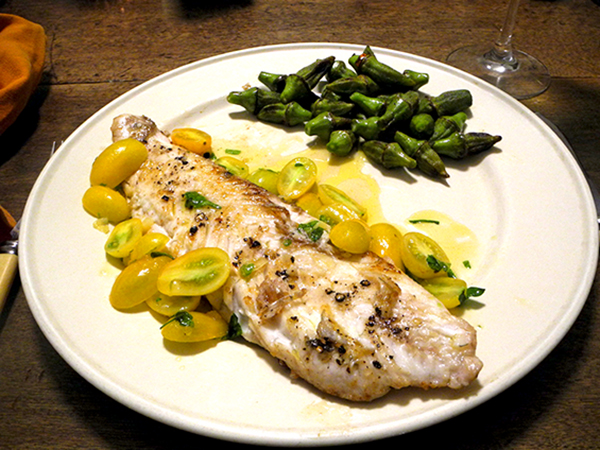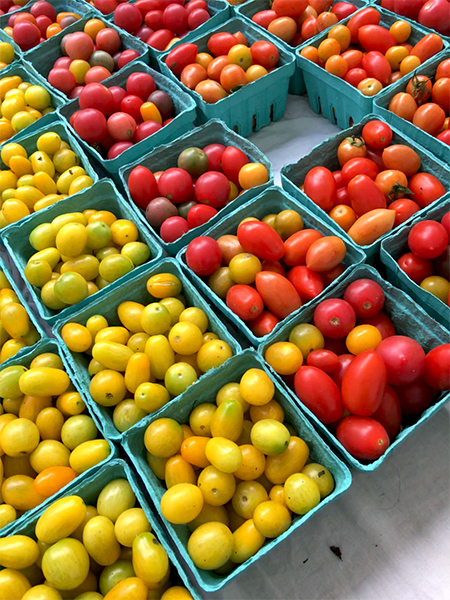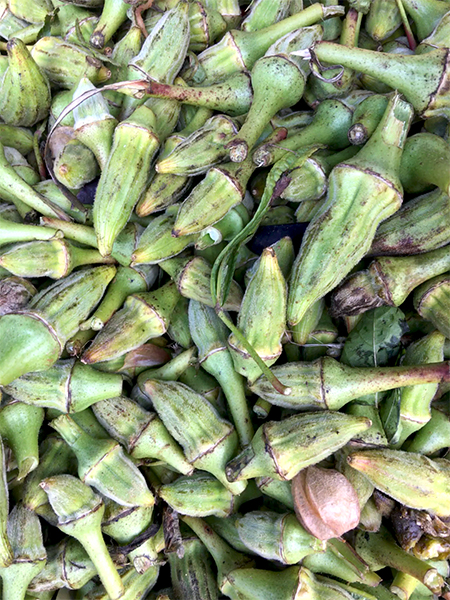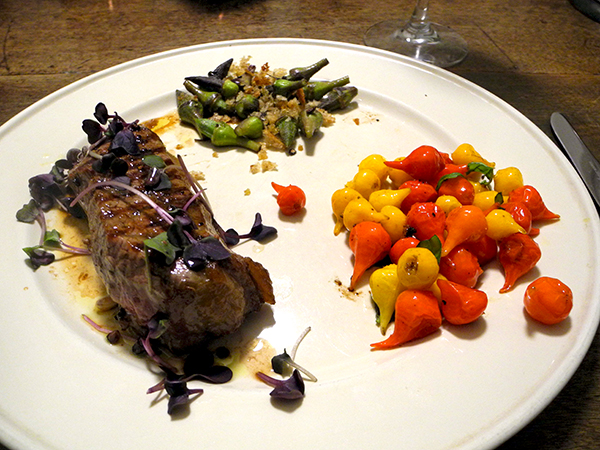
I don’t normally do stews. I don’t have anything particular against them. Maybe I usually like to work fast, or maybe I prefer the neatness of a more aggressive relationship between food and heat than that associated with dishes called stews.
But the luscious product of this quite simple recipe could change my mind, especially since I cam imagine how well it might be suited for serving to guests as a casual entrée. I found it while looking for something this past Sunday night to match both my food stores (a single monkfish tail, lots of heirloom tomatoes, handfuls of small okra) and the time I had available to make dinner. It was fairly quick to prepare, and the process itself pretty straightforward.
The reward was the happy melding of ingredients, and a wonderful savory creamy sauce that had absolutely nothing to do with cows.
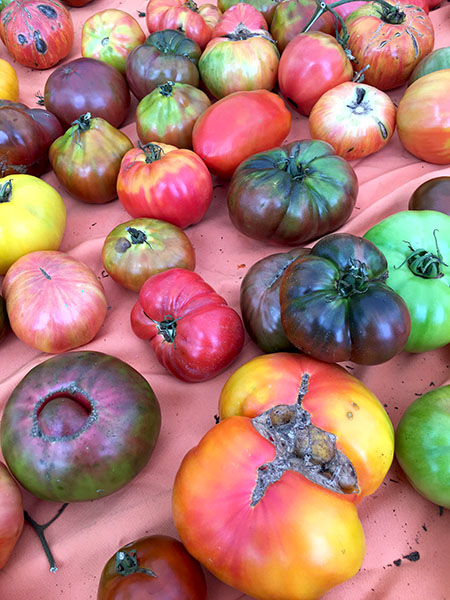
- two cups of chopped heirloom tomatoes from Berried Treasures Farm, and one cup of chopped yellow onions from Neversink Organic Farm, sautéed in 3 tablespoons of olive oil inside a large, heavy tin-lined high-sided copper pot over a medium-high flame for about 8 minutes, or until the onions had softened and the tomatoes had virtually become a sauce (turning the heat up still higher near the end to reduce the amount of liquid, since they were heirlooms, and not a sturdier breed), seasoned with sea salt and freshly-ground black pepper, then ½ cup loosely packed chopped mint from mint from Alex’s Tomato Farm and ¼ cup loosely packed chopped lovage from Keith’s Farm (tarragon would actually be the first choice, but I didn’t have any), ¼ cup white wine and 2 to 3 tablespoons of a good white wine vinegar, here Aceto Cesare Bianco white wine vinegar from Buon Italia, were all added and the contents of the pot allowed to continue to cook for about 2 minutes, or until the smells of the wine and vinegar had dissipated, a one pound monkfish tail, from American Seafood Company in Chelsea’s Down to Earth Farmers Market on 23rd Street, sliced into pieces 1 ½ inch thick, added to the tomato mixture, the pot now covered, and cooked for 5 minutes, or until the flesh was opaque, then uncovered, the fish turned over and cooked for another 2 minutes, served sprinkled some of the fresh herbs

- handfuls of small okra from Kernan Farms, their stems trimmed, washed, dried thoroughly, sautéed over a high flame in a large cast iron pan with a little olive oil and 2 crushed dried peperoncino Calabresi secchi from Buon Italia, seasoned with sea salt, served in broad low bowls to the side of the the monkfish stew
- the wine was a wonderful Greek (Thessaly) white, Zafeirakis, Malagousia, 2016, from Flatiron Wines; it turned out to be a perfect pairing
- the music was Mozart’s ‘La Finta Giardiniera’, Nicolas Harnoncourt conducting Concentus Musicus Wien
